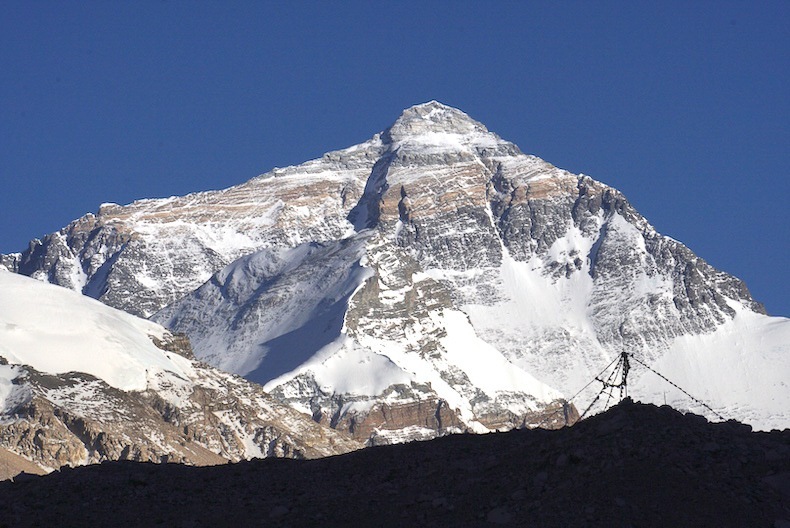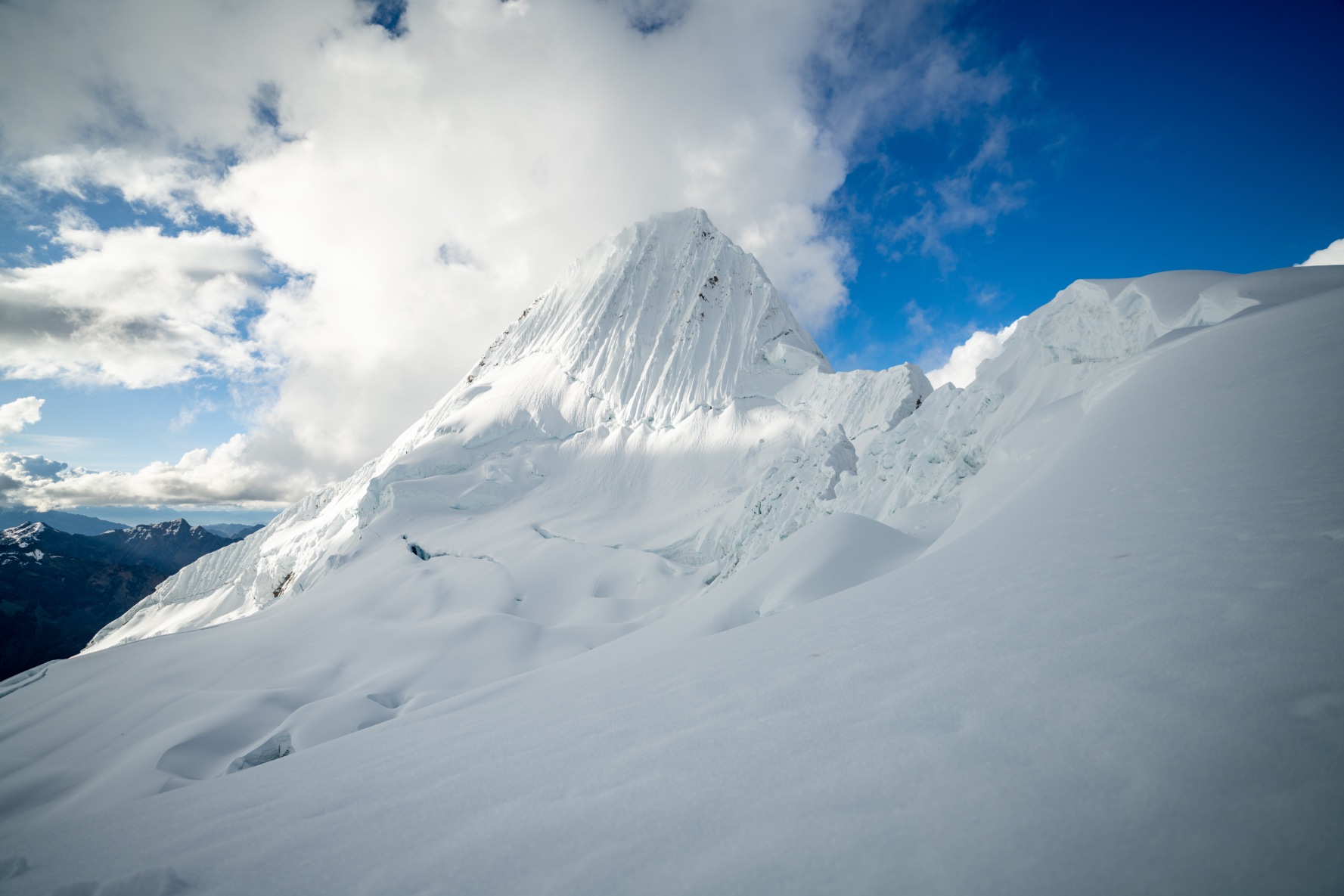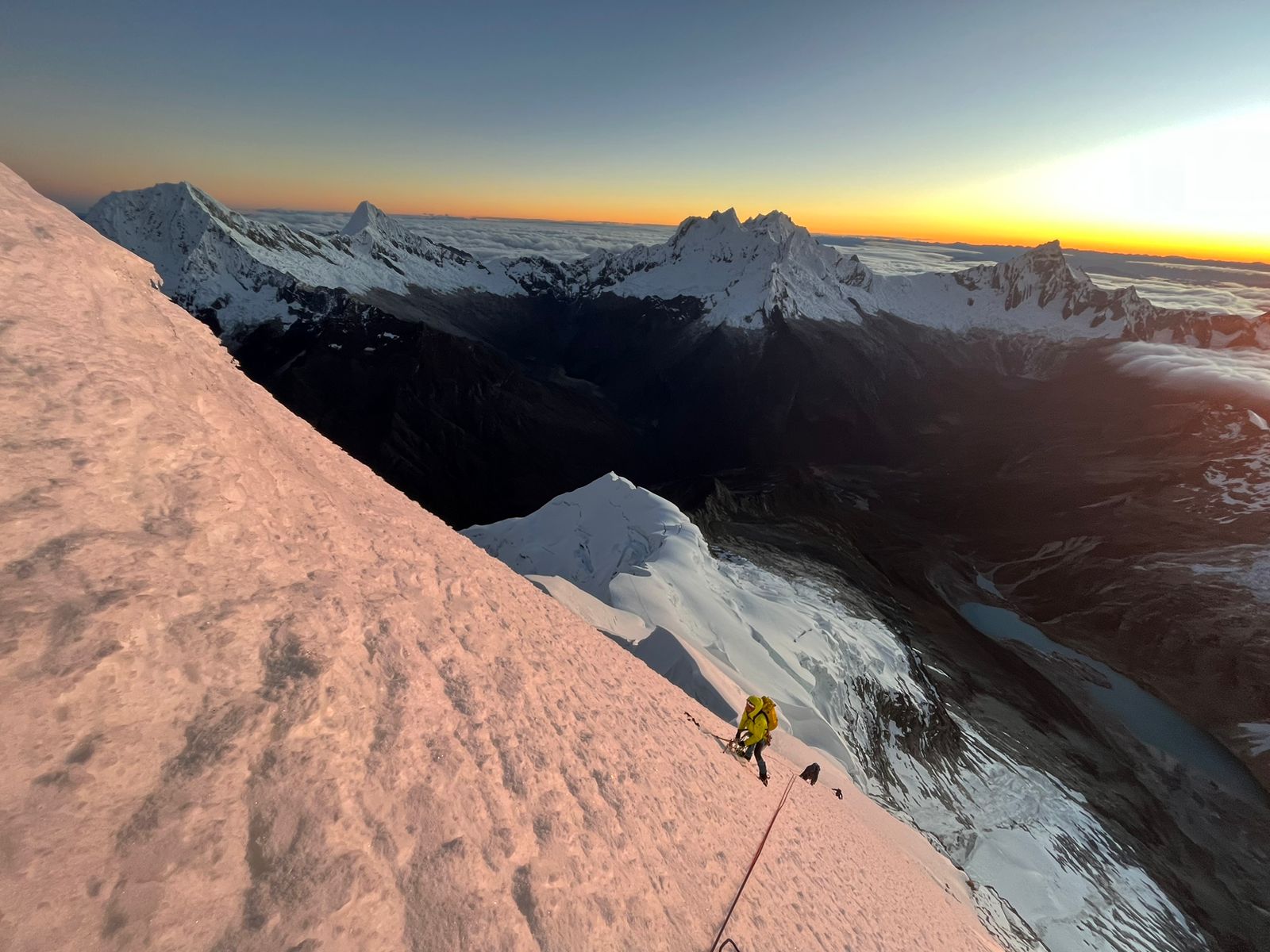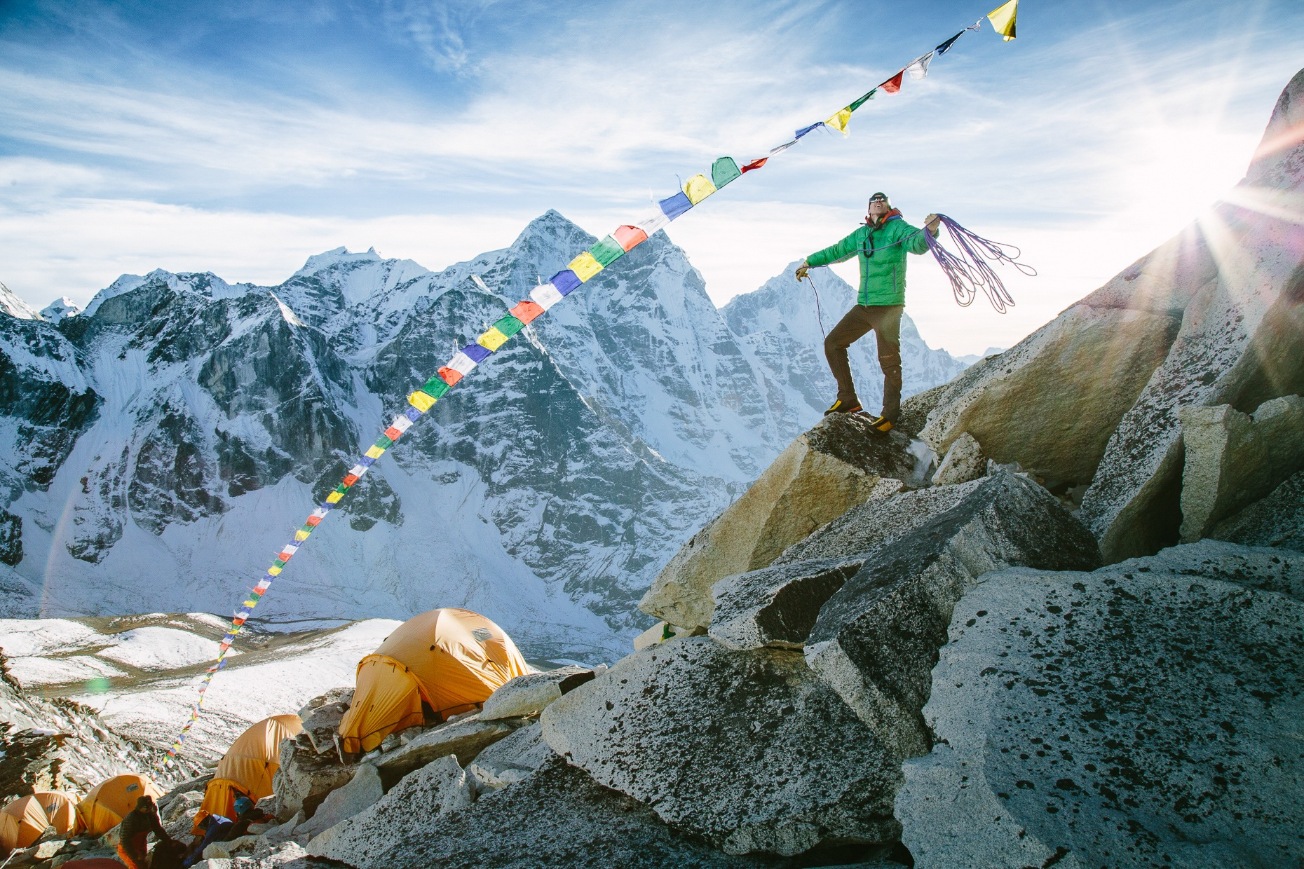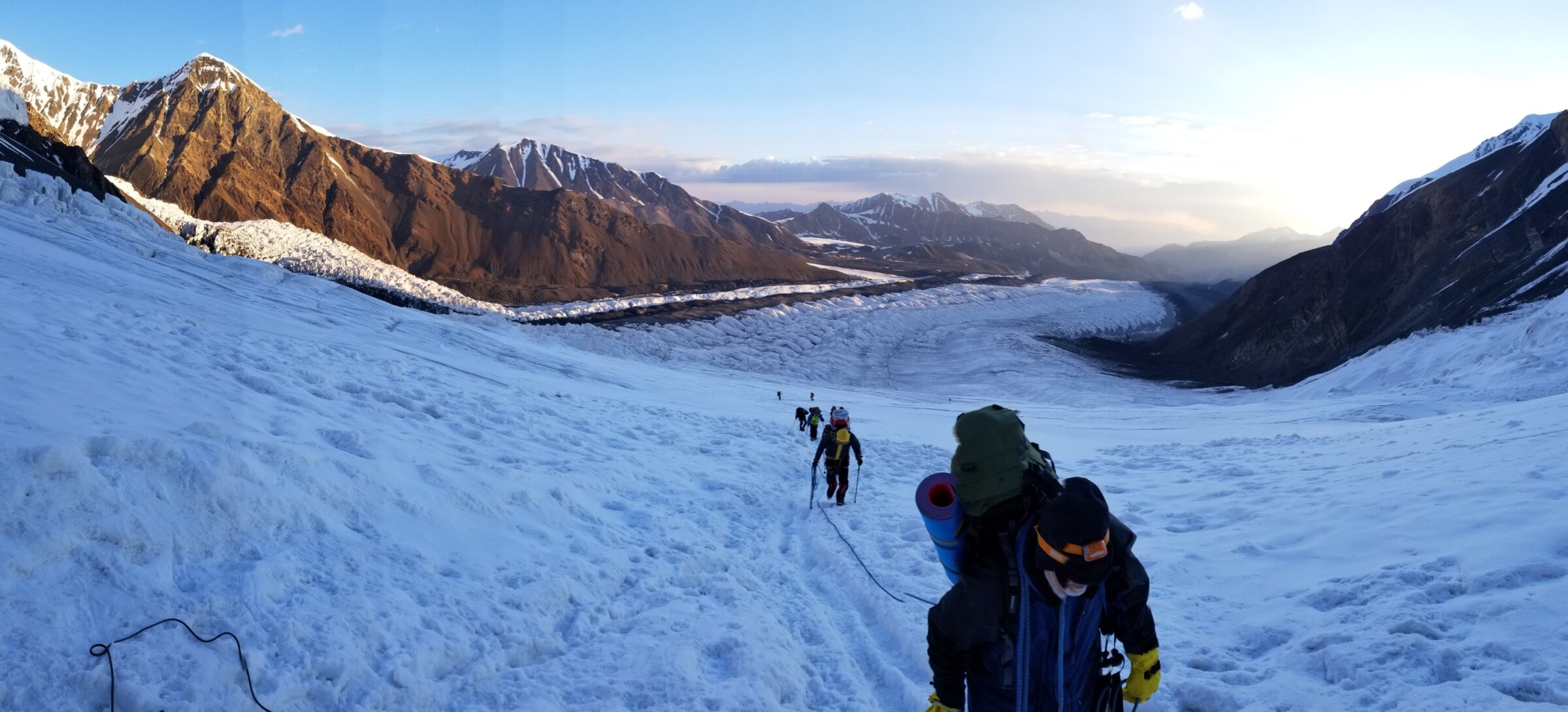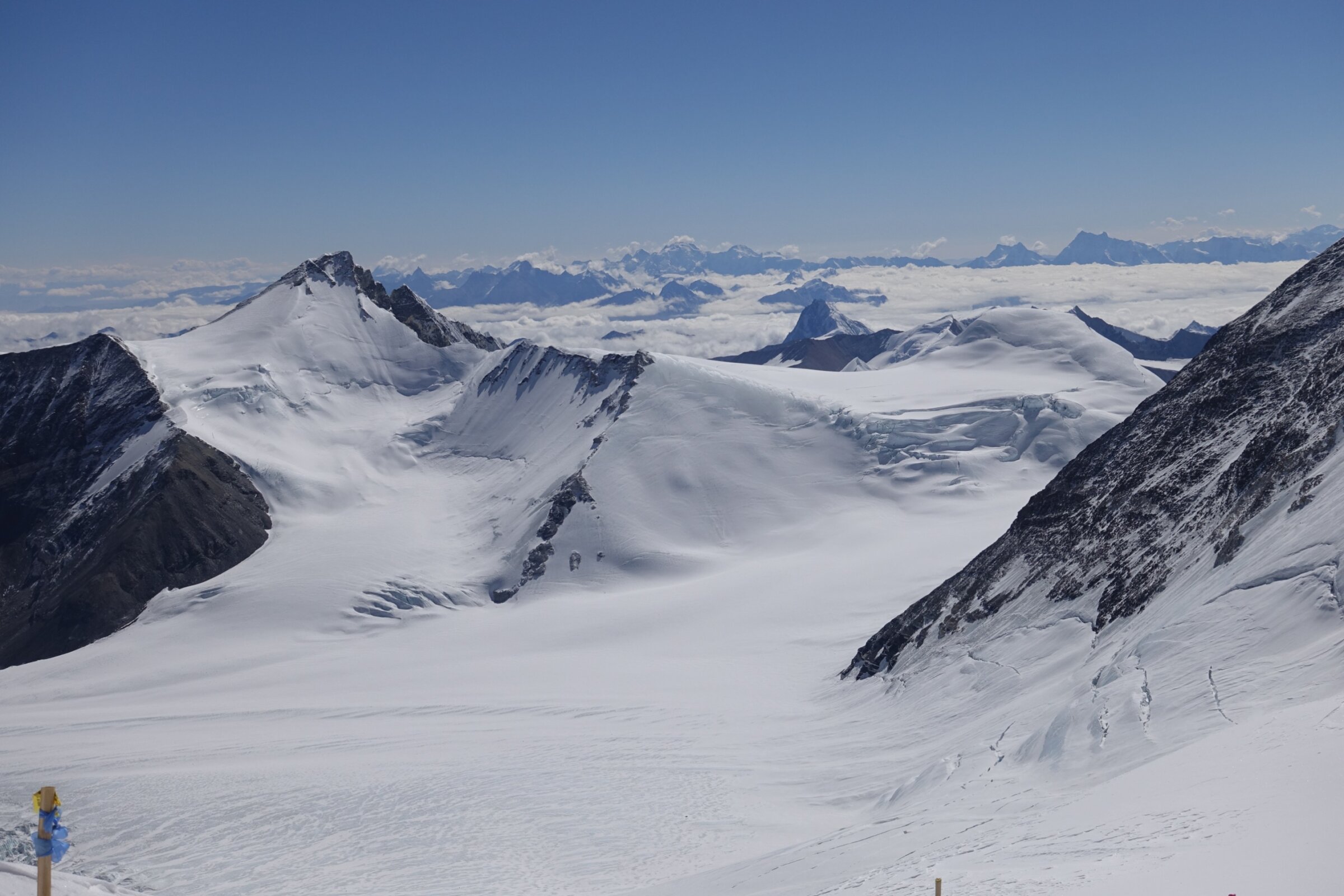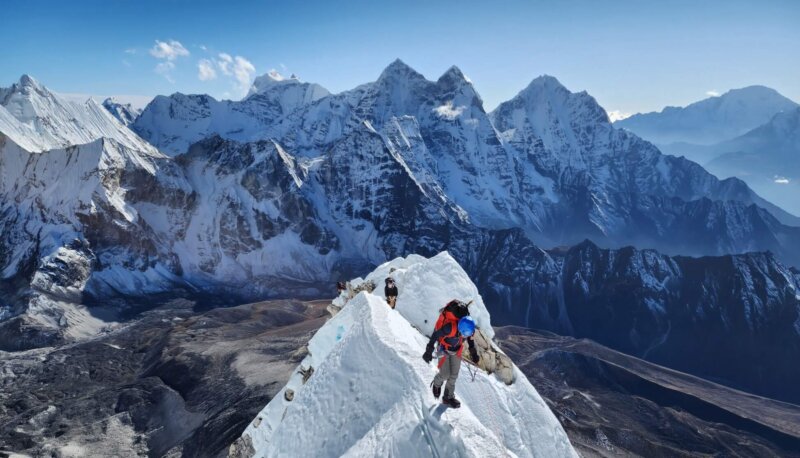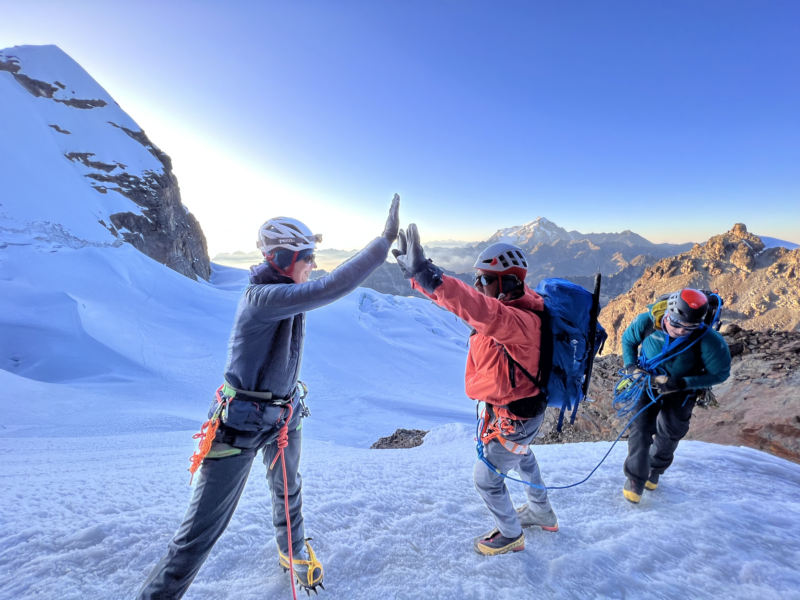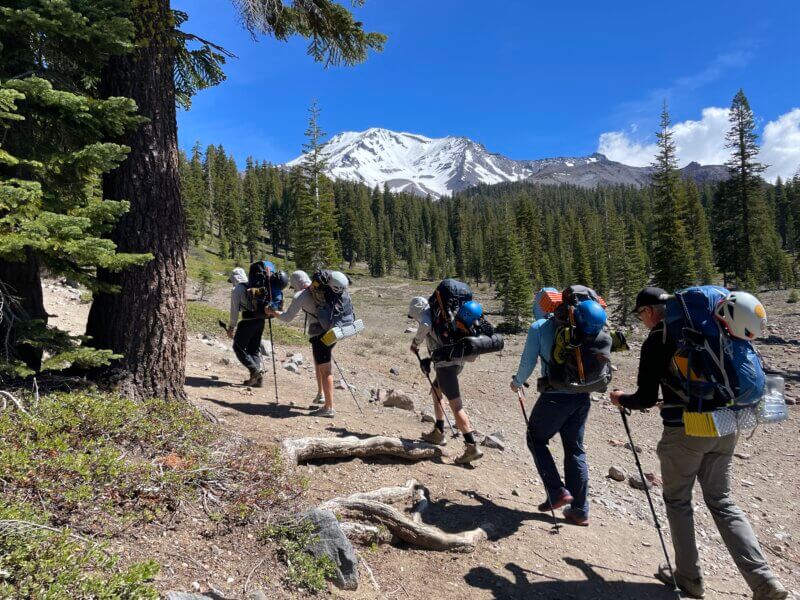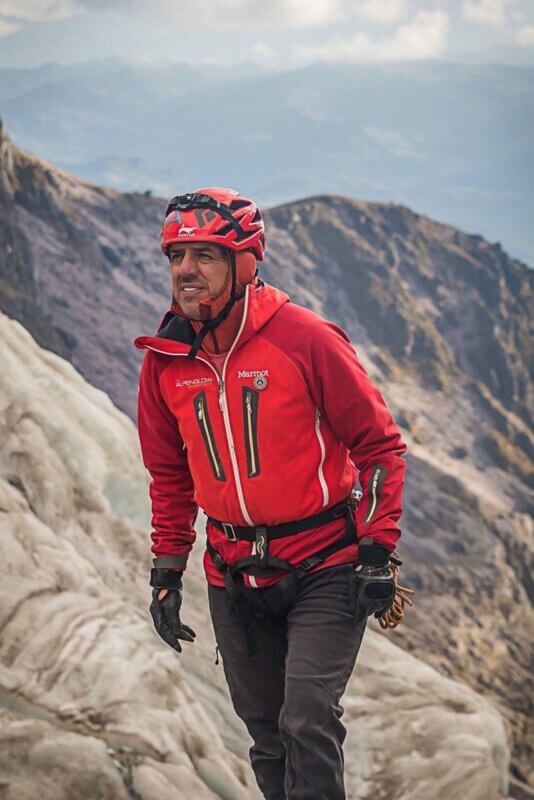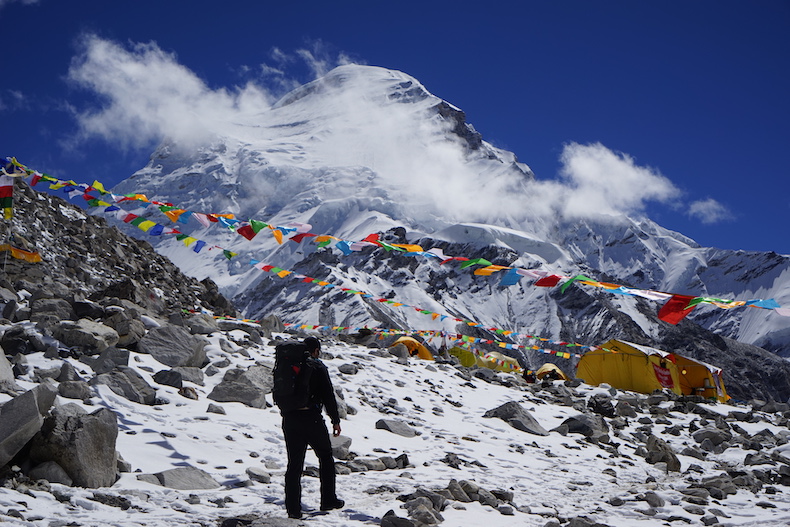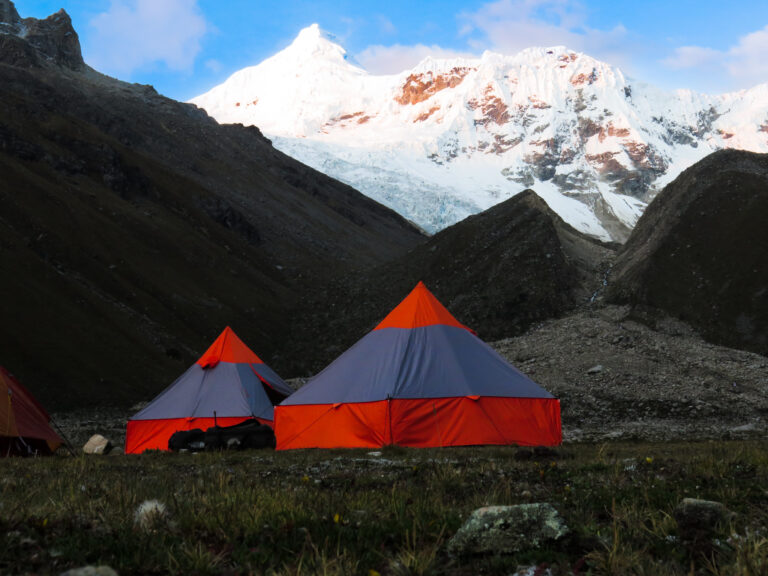The Northwest Ridge on Cho Oyu
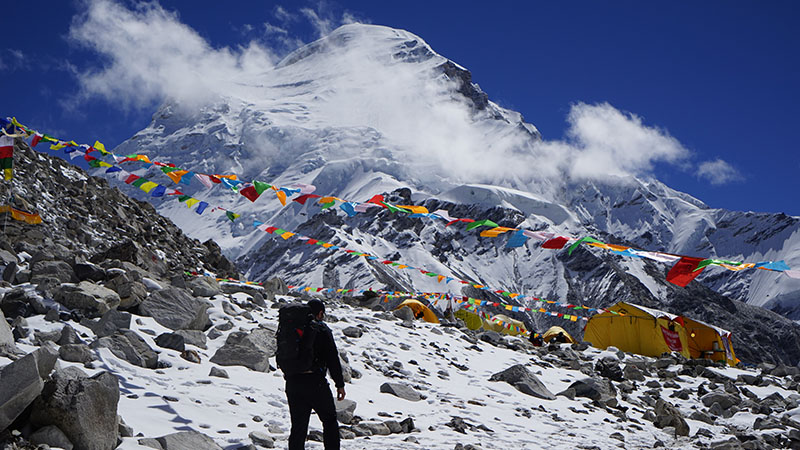
As the sixth highest peak in the world, Cho Oyu offers an array of climbing routes on the ‘easiest’ 8000er, each presenting distinct challenges and rewards. Among these, the Northwest Ridge route from Tibet stands out as the most straightforward and least hazardous route to the summit. In this blog, we take a deep dive into the route up Cho Oyu via the Northwest Ridge.
Challenges Along the Northwest Ridge
The Northwest Ridge presents climbers with a series of formidable challenges that test their skills, strength, and determination. As they ascend into the thin air of the Himalayas, climbers must contend with steep inclines, exposed sections, and high altitude mountain weather conditions. The rocky crags and icy couloirs of the ridge demand precision and surefootedness, while the high altitude exacts a toll on both body and mind. While the remote and isolated nature of the Tibetan side adds logistical complexities, requiring meticulous planning and preparation to ensure a safe and successful climb, Alpenglow’s 24/7 logistics team has decades of experience in planning expeditions to Cho Oyu.
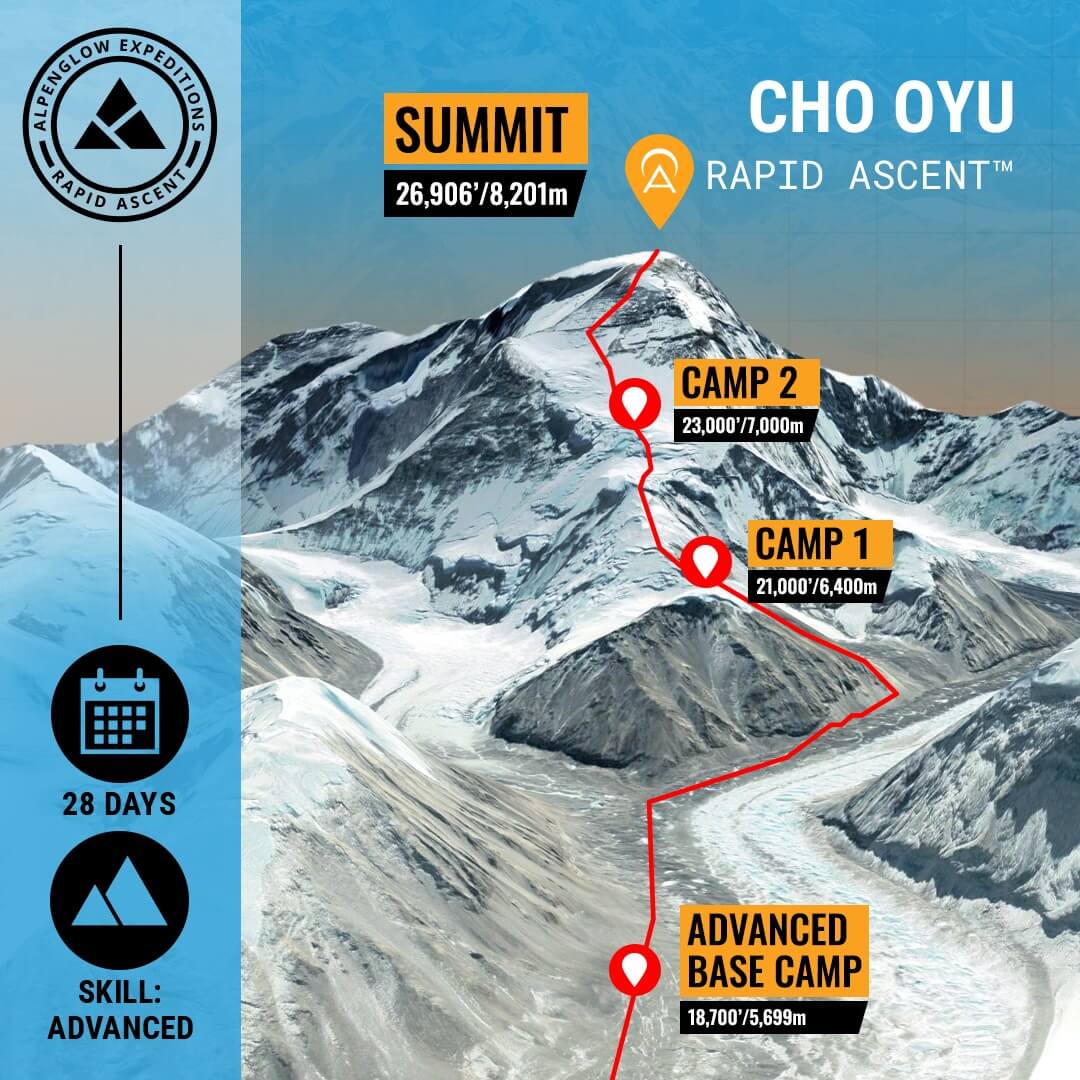
Establishing Camps along the Route:
Throughout the ascent via the Northwest Ridge, climbers establish a series of camps at strategic altitudes to facilitate acclimatization and rest. Typically, camps are set up at the following key points:
Base Camp: This base camp is a simple but important step. At 16,100/4,907m, we’ll spend a day resting here before moving to ABC.
Advanced Base Camp (ABC): Located at approximately 18,500’/5,650m the ABC serves as the initial staging point for climbers, providing a comfortable base for acclimatization and preparation. Alpenglow’s base camp is stocked with high quality food prepared by Western-trained cook teams, a separate dining tent, as well as a heated lounging area.
Camp 1: Situated at around 21,000’/6,400m, Camp 1 marks the first significant altitude gain on the route. While non-Rapid Ascent climbers typically spend multiple nights here to adjust to the thin air and prepare for the challenges ahead, we can suffice by touching 21,000 and then returning to the more comfortable altitude at ABC.
After we’ve touched camp 1, we’ll spend the next day resting in ABC before moving back to Camp 1. From there, we’ll do another lap up to climb the ice cliff (the most difficult part of the route), touch 23,000’, and then descend all the way back to ABC for four days of much needed rest before a proper summit push. The first step is to return to C1 and spend one night there before pushing up to Camp 2.
Camp 2: Positioned at approximately 23,000’/7,000m, Camp 2 offers climbers a crucial rest stop before tackling the higher reaches of the Northwest Ridge. Here, climbers replenish supplies, rest, and finalize their summit push strategy after pushing through the most technically challenging section of the route.
Reaching the Summit:
Reaching the summit of Cho Oyu via the Northwest Ridge is a testament to your resilience and perseverance. As climbers stand atop the world’s sixth highest peak, they are rewarded with sweeping panoramic views of the surrounding Himalayan giants, including Everest and Lhotse. The sense of accomplishment and euphoria that accompanies this momentous achievement is unparalleled. From the summit, Alpenglow climbers will either return to C1 or ABC.
After completing the climb and celebrating appropriately, climbers will return to Shigatse and eventually onto Chengdu before returning home, all in a quick 28 days thanks to Rapid Ascent.
Interested? Check out our Cho Oyu Rapid Ascent expedition overview for more details and a link to inquire about joining our teams.

